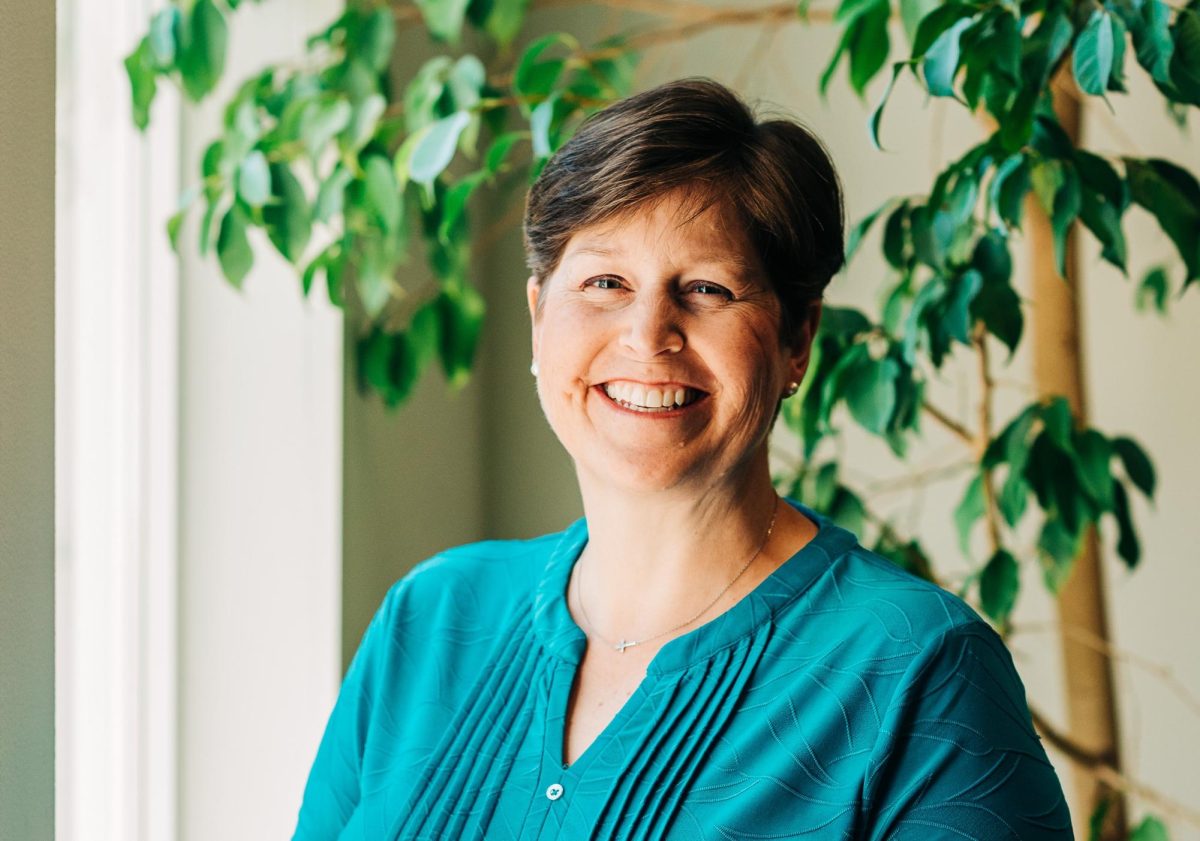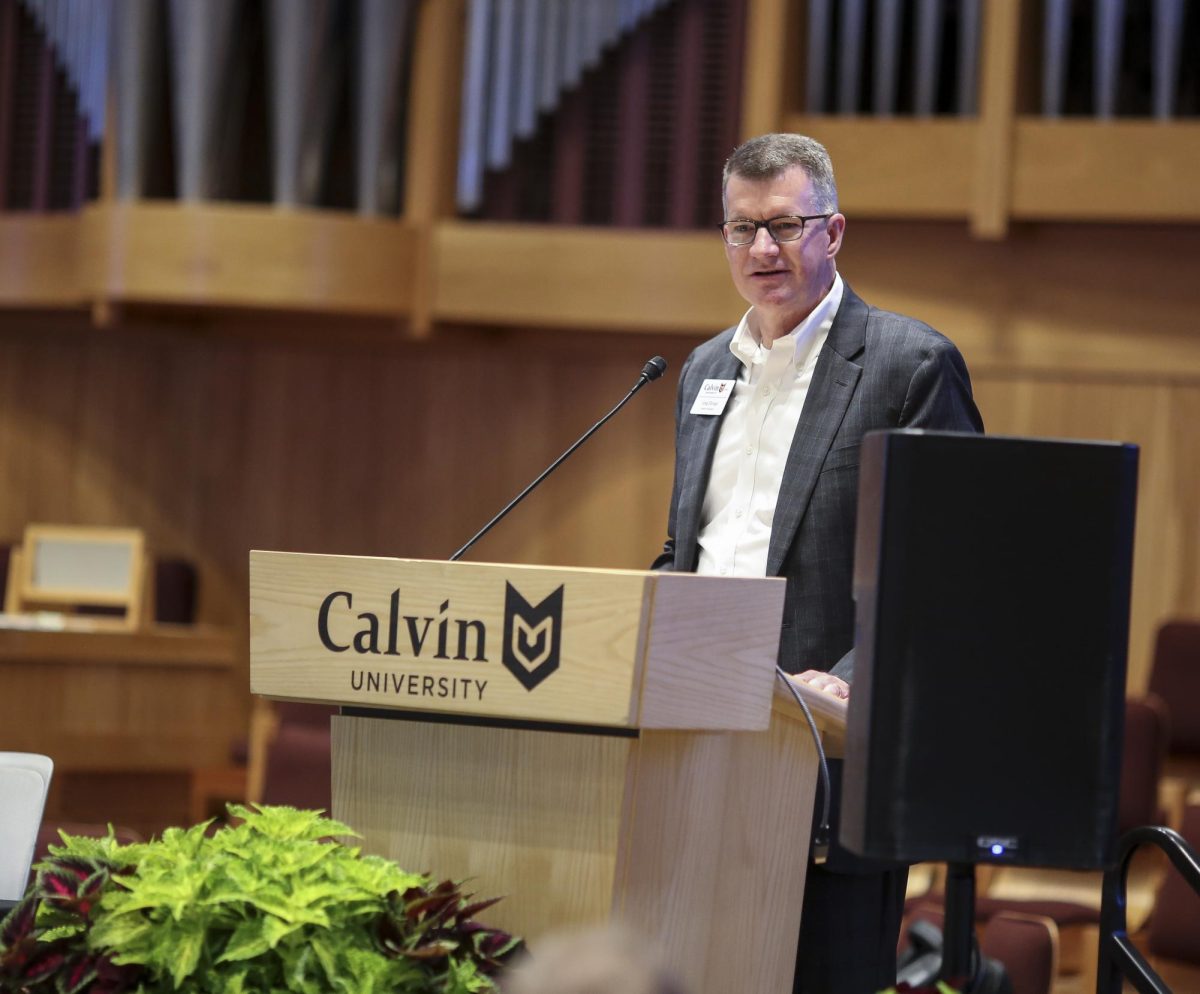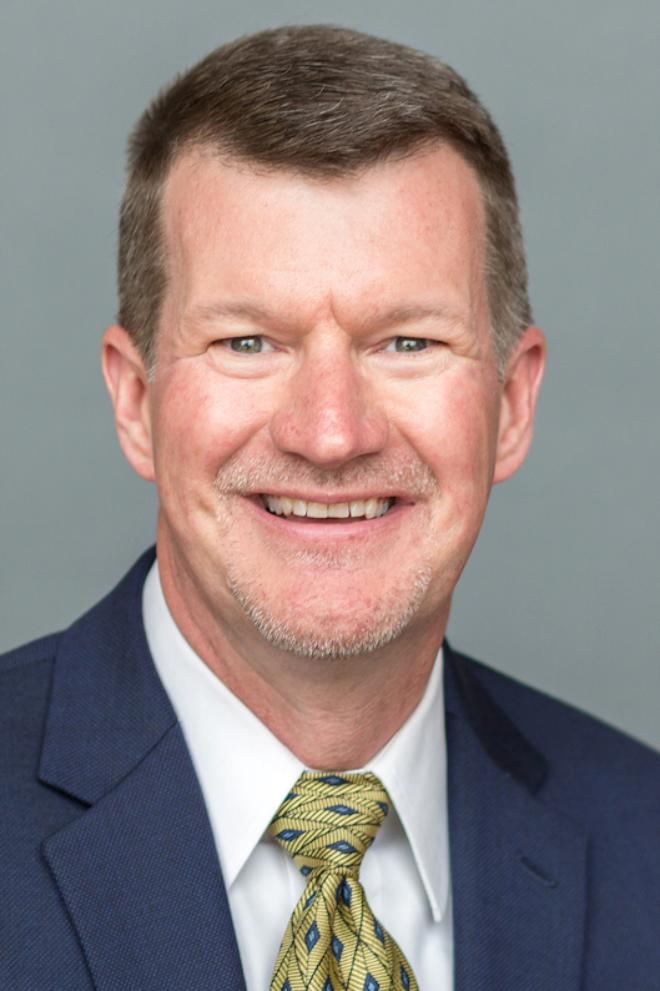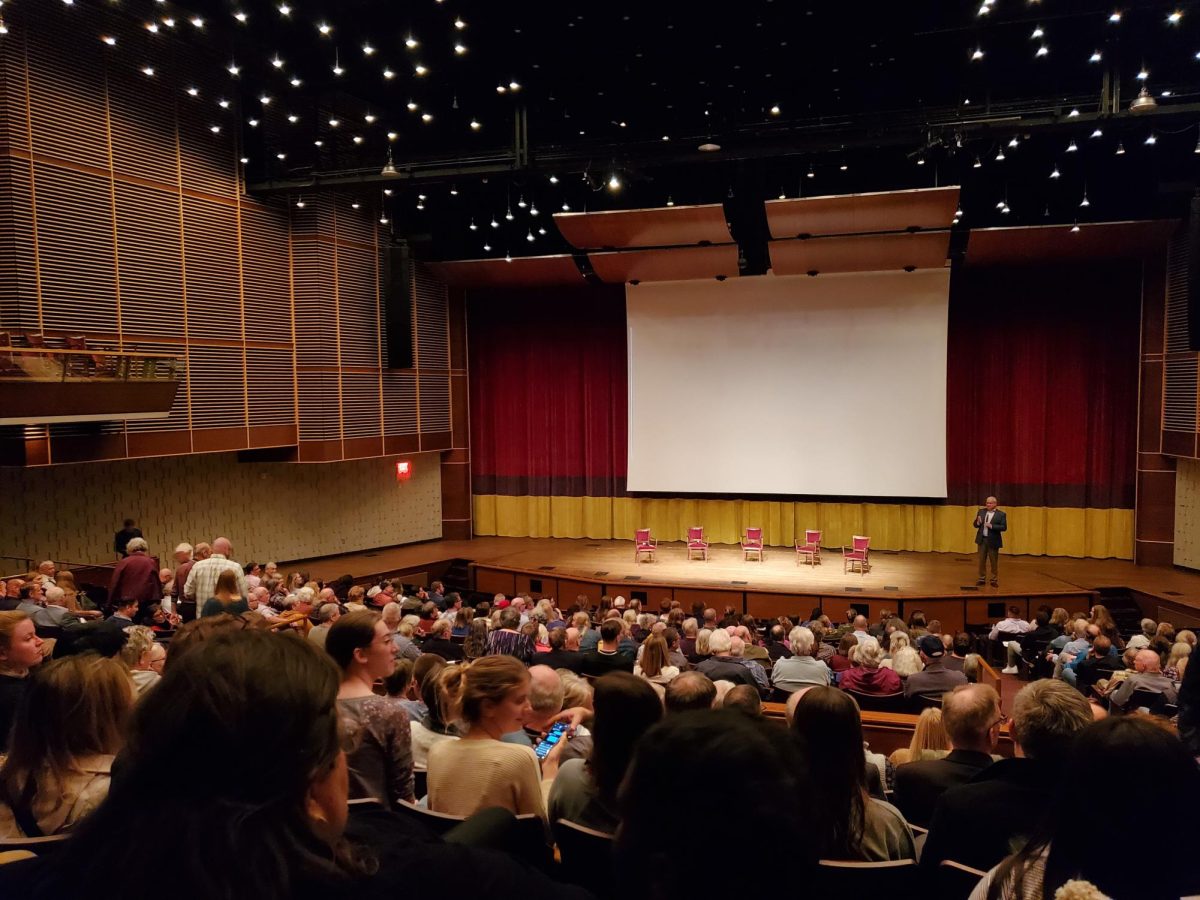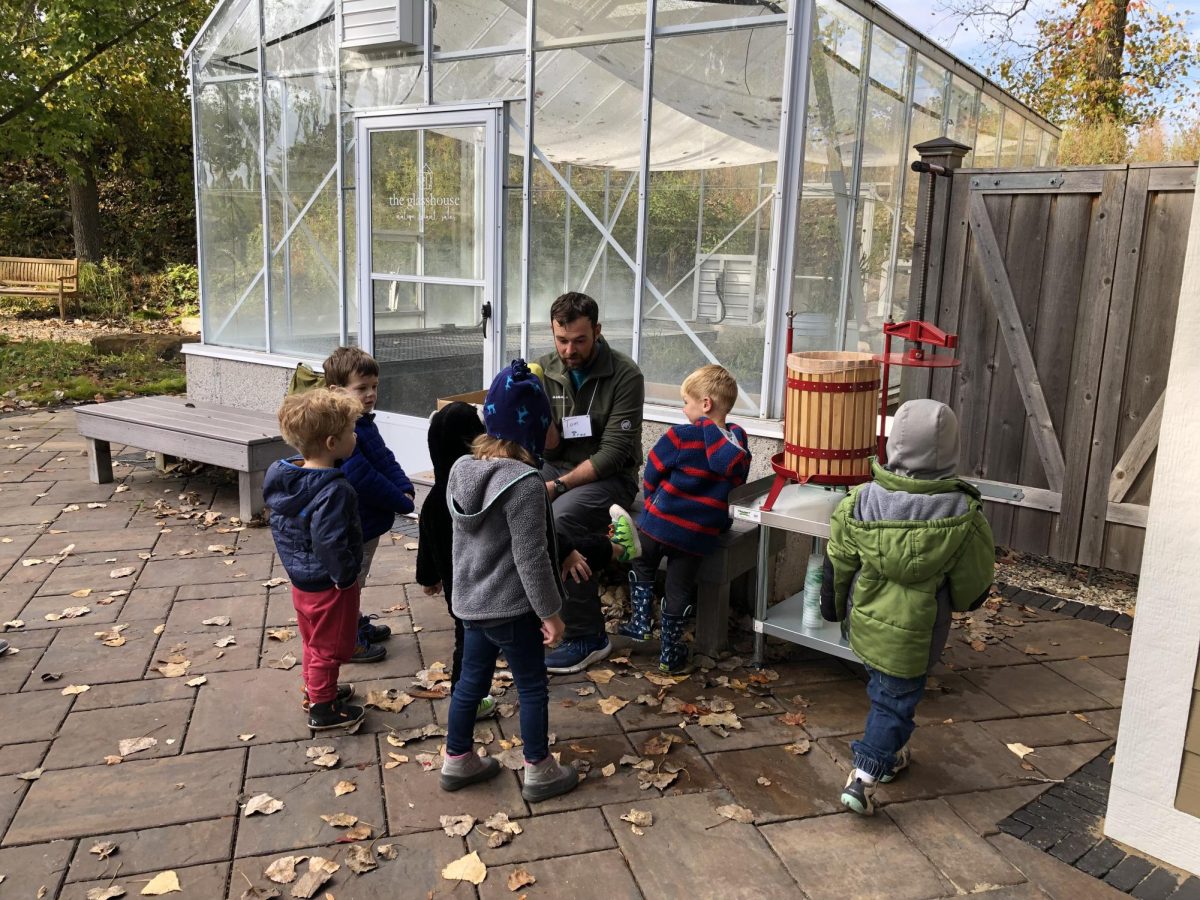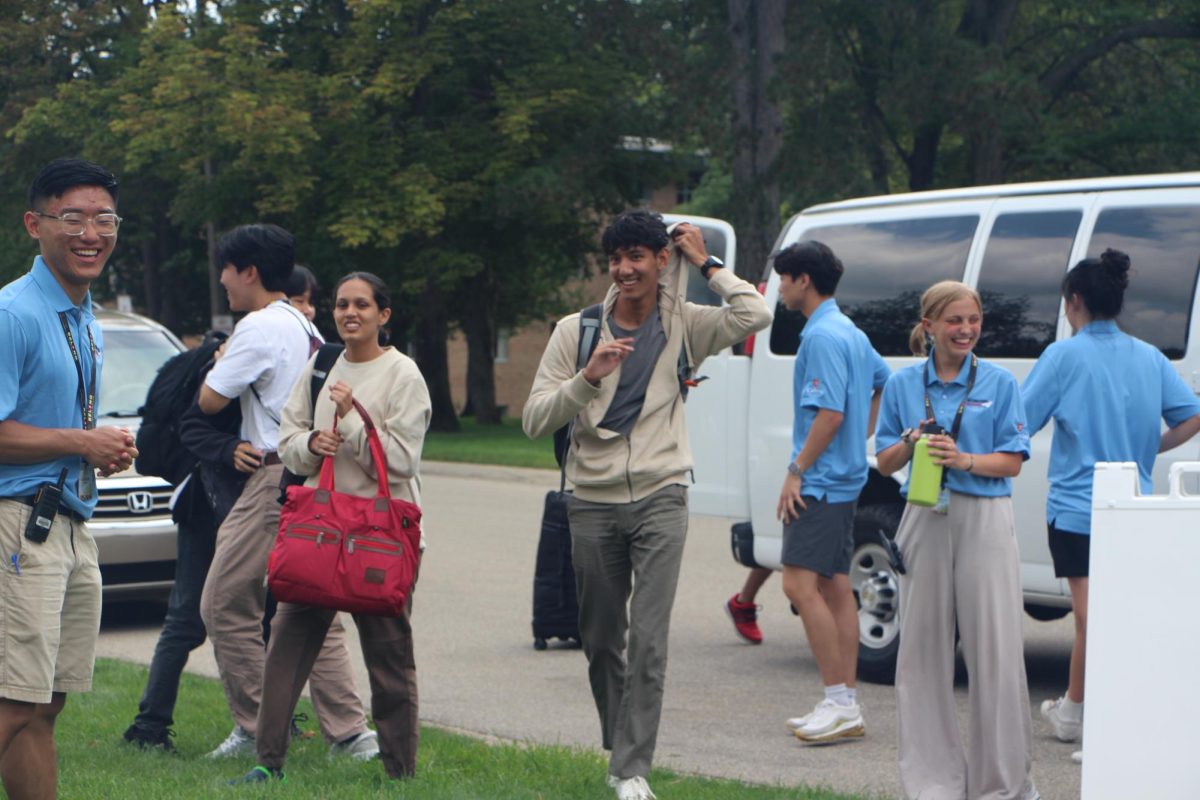Calvin is home to seven dorms and 48 floors, four of which have unique and intentional purposes. These living-learning floors make up all of van Reken and the first floor of Timmer. The floors are the Outdoor Recreation and Creation Care, Grassroots, Honors and Health and Wellness floors.
“Living-learning communities at Calvin are unique because they provide a space for students to live with greater intentionality in their out-of-classroom experience,” said Brandon Jacob, resident director of Noordewier-Vanderwerp and program advisor for the Health and Wellness Floor. “All of our communities are focused around particular themes. Through those themes, students share experiences and learn more about God’s world alongside peers, with the support and mentorship from staff and faculty.”
The floors “came about because of a confluence of a few things in residence life,” shared Christopher Klein, living-learning program coordinator, “[such as] a desire to expand into some new areas of living-learning communities because of research that was highlighting the ways intentional communities can deepen student learning and retention while also fostering meaningful relationships and fun.”
The Mosaic floor (now known as Grassroots) was started in 1996 and originally made up the second floors of Kalsbeek-Huizenga. This floor “was formed to promote diversity at Calvin by creating an environment where people could come together and learn about each other,” said Klein, quoting the Calvin website.
Much like Grassroots is now, the old Mosaic floor was comprised of 80 students, a staff program coordinator, student program assistants, RA’s and a faculty member who taught an applicable floor course.
The success of this floor played strongly into the formation of the van Reken floors, which opened in 2008.
“The residence halls were at capacity,” Klein said, “and if we were going to add more…we wanted to be intentional about how the design and architecture of that space might foster the objectives of the living learning communities.”
A program review of the Mosaic floor found that those on the floor “might benefit from having other like communities in proximity,” Klein said. “We have seen the value of this in terms of the ways van Reken [residents] see themselves as part of a collective project in van Reken and then more broadly in residence life.”
The Wellness Floor, the pilot of which was launched this year, was “an idea long in the making,” according to Jacob. “During my graduate work, I compiled research about college students’ sleep practices. I found that…college students are some of the most sleep-deprived people in our country, and it’s affecting almost every aspect of their lives, from relationships to academic success.”
Jacob’s intention with the Wellness floor was to “leverage the educational potential of community to create a living environment that promoted healthy habits—that people on the floor would support and be supported by one another in their efforts to live well.”
Students who live on these floors benefit from the intentionality of their structure, but also share many of the common experiences of all students across Calvin.
Health and Wellness
Ground Timmer
[media-credit name=”Photo by Lisa Terwilliger” align=”alignleft” width=”564″] [/media-credit]
[/media-credit]
“Depression and stress can really get to the college student, and finding balance between work and leisure is incredibly important,” said sophomore Andrew Darmawan.
Students living here focus on maintaining physical and spiritual health and finding balance amid the crazy schedules of a typical college student. “We are committed to learning about ways to better ourselves and treat our bodies right,” said sophomore Randy Foreman.
“I definitely see what our floor stands for as being very counter-cultural and necessary,” added Darmawan.
While sleep is something that the floor encourages, that isn’t the only focus.
“Our floor seeks to live a holistic lifestyle, and so we see a major part of this is being healthy and well,” said student Josiah Kinney. “We are committed to trying to build healthy habits and to live better lives—physically, mentally, emotionally, and spiritually.”
To encourage the students to find ways to implement healthier choices into their busy lives, Darmawan explained that the residents attend community lectures once a month that cover a range of topics including the practicing of the Sabbath and one’s neurological health.
Students have even used technology for accountability. “We have been using Jawbone UPs to track our physical activity and sleep in progression towards our long-term goals,” said Darmawan.
While reworking one’s schedule to accommodate more time for rest may sound constricting, students on the Health and Wellness floor still find plenty of time for fun.
“Every other Tuesday we have game night,” said Foreman. “It’s always a good time and helps us grow closer as a floor and as friends.”
This purposeful lifestyle has paid off; both Foreman and Kinney attributed the healthier lifestyle choices the floor encourages to a better college experience.
“I always knew [sleep] was important, but never realized just the difference that it makes,” said Foreman. “I’m able to work more efficiently and focus better in class. I’m also just a better person when I get enough sleep; I’m able to give the best Randy I can to my friends, professors, parents, and everyone else.”
“I have found how awesome being healthy and well really is,” said Kinney. “I have enjoyed the surprising benefits of sleep most of all. I can never get over how much power sleep has and the countless negatives of not sleeping.”
While the Health and Wellness floor does have some extra requirements and opportunities, the students who live here still experience aspects of normal dorm life, including the challenge of finding balance.
“I am glad that I chose to be a part of a living-learning community, even though it still has its challenges, like just taking the time to know people in a deep and meaningful way, and trying to get your academics together, all the while remembering to take your laundry from the drier or clean the dishes,” said Darmawan.
“Wellness connects to every aspect of your life,” said Kinney. “It’s a really important skill to learn.”
Outdoor Recreation and Creation Care
1st van Reken
[media-credit name=”Photo by Alden Hartopo” align=”alignleft” width=”564″] [/media-credit]
[/media-credit]
Like other living-learning floors, the students of first van Reken are required to participate in many activities together, but this is one of senior and floor alum Alden Hartopo’s favorite aspect of the community.
“When it came to floor events, we would go backpacking in Manistee, canoeing down the Manistee river, go to a cabin over the winter, sea kayaking on Lake Michigan, and climb up the Sleeping Bear Dunes,” he explained. “Over my two years living there, I have gotten to meet people who have since become some of my closest friends at Calvin. The closeness of the floor community was definitely an important contributor to making it such a positive experience.”
The co-ed nature of the floor also adds to the floor’s closeness.
“There is close to zero drama at all times, and it’s awesome,” Farris said. “Speaking from a woman’s standpoint, I think it can be hard to learn how to have deep relationships with men without stepping over emotional boundaries.”
One way the students of first van Reken commit to furthering growth in the community is on floor dinners.
“Once a month, a group of people from the floor make floor dinner for everybody!” Farris shared. “Last time, we had a boys vs. girls cook off with our floor mentor, the guy who created living-learning communities here, and our [resident director assistant]. [The boys] cooked up some really tasty lamb meat.”
Just like their living-learning counterparts, the students of first van Reken must also take a floor class. Theirs is “Outdoor Pursuits.” Farris explained how “professors or students involved in sustainability…come talk to us at floor meetings.”
But their “outdoor pursuits” are also practical.
“Ryan Rooks teaches how to cook, kayak and generally survive in the backcountry,” said Farris. “We learn first aid, trip planning skills, knots, canoe strokes and how to set up pristine tents. Our class (which counts as a PER) culminates in an overnight backpacking trip to Manistee National Forest.”
This trip has been a major highlight of Farris’ experience on first van Reken.
“On the trail, we use our skills and spend a lot of good time together. There is no better way to bond people than by throwing them all into the wood together, making them walk and making them rely on each other to stay well.”
The floor is not without its challenges, though.
“I think our biggest challenge is that we become complacent,” Farris explained. “Because we live together and spend so much time together, we forget to ask good questions and dive deep into each others’ lives. It is a constant challenge to remember to be intentional, then act on it.”
Farris sees first van Reken is unique, but also very normal. Farris may not have learned to backpack on another floor, but she has “learned what everybody else learns when they come to school: how to live with people well. The way you have to adjust to dorm life is the same in van Reken as anywhere else.”
All in all, though, Farris is adamant that “looking back, there is no other floor I’d want to be on.”
Grassroots
2nd van Reken
[media-credit name=”Photo by Segyo Oh” align=”alignleft” width=”564″] [/media-credit]
[/media-credit]
“Everyone is impacted by racism somehow,” said recent graduate Grace Hostler (‘14), a former RA of the floor, “whether on the receiving or giving end, or even just observing it happening to others. Even at Calvin, there is a lot to be done in terms of diversity and anti-racism.”
Community is inherently a central part of this floor.
“Grassroots focuses on the floor as a whole, as individuals, and how we can all impact the greater communities we are part of [or] will be part of,” Hostler explained. “The students get to know each other on a deeper level through floor events, a class based on racism and racial reconciliation, and life stories.”
Current floor resident sophomore Segyo Oh echoed these sentiments. “I find it a privilege to be able to share with others about your life and to hear other people’s perspectives. The goal of our floor is to discover in depth our ethnic and racial identities in Christ.”
To encourage engaging conversation and a listening community, residents participate in a variety of activities including cultural dinners prepared by someone on the floor, participating in the telling of life stories every Sunday night, and discussions known as “fireside chats.”
“Fireside chats help us to create an environment where we can talk about racism. This is an intentional conversation time where the questions are anonymous and we discuss different racial issues such as racism within Christianity, Calvin, and our neighborhoods,” said Oh.
These community experiences build on each other, ultimately forming bonds and bringing the residents together as a floor.
“Although we aren’t the perfect floor where everyone is best friends with everyone, we are definitely close,” admitted Oh. “You know what they are going through and are able to help them through and vice versa. I can just walk into someone’s room and talk to them as if they were my sister or brother.”
This closeness on the Grassroots floor creates a place where topics like racism and reconciliation, which aren’t always the easiest of topics to talk about, can be discussed as residents share, learn and listen to one another in a positive environment.
“Racism is an ongoing thing and something one may face everyday,” explained Oh. “The intentions of the floor are very applicable, because we are going to see someone who is from a different culture, race, or ethnic background from us everyday.”
While Grassroots is a unique community, Hostler’s favorite memories are ones that could have been found on any floor: “Staying up extremely late and having all kinds of conversations—silly, intellectual, spiritual—that led to closer relationships.”
Honors
3rd van Reken
[media-credit name=”Photo by Nicole Karl” align=”alignleft” width=”564″] [/media-credit]
[/media-credit]
One of the common misconceptions about the Honors floor is that students “do nothing but stay in their rooms studying and don’t know how to have fun,” said Leduc. “That could not be further from the truth. Some of the most fun and hilarious moments I’ve had in my life have taken place while I’m with other third van Rekenites. Sure, we may have a focus on academics and that is certainly a big part of our floor’s identity, but we’re really not that different from other floors.”
“Because it is a co-ed floor consisting of people who are passionate about their respective interests, people tend to be more courteous towards one another, especially of people who have different opinions on a given topic,” said first-year student Johan Lee.
During each weekly meeting, Honors students “intentionally spend time together and discuss various relevant issues, and also take a one-credit class together.”
This semester, the floor residents are reading and discussing Alexis de Tocqueville’s “Democracy in America.”
Outside the mandatory group time, floor members stick together. “It’s awesome to have the lobbies—to me, they represent many times where I needed a distraction and wandered out of my room only to have a really cool conversation,” said fifth-year senior and Honors alum Lauren Cremean.
However, there are stresses that come with the pressure of being an Honors student on a floor of high-achieving peers.
“There are two types of Honors students,” Leduc explained. “Some Honors students are incredibly smart and absolutely love getting absorbed in their academics. Other Honors students want to be involved in everything on campus and find themselves simultaneously involved with various student organizations, choirs, on-campus jobs and, not to mention, a full course load of classes. As the RA on the floor, I sometimes worry that people on third van Reken try and do too much; while I certainly want to encourage them to pursue their passions, I also want to remind them that it’s okay to not do everything and be perfect in everything.”
The concentration of highly-driven, passionate students can lead to some friction due to different perspectives.
“The most challenging thing is dealing with all the differences between personalities on the floor, but it’s also one of the funniest things,” said sophomore Phil Tubergen.
Despite these stresses, students of the Honors floor are a deeply-bonded group of college students more than anything else.
“The best thing about living on 3rd van Reken…was the family,” shared Cremean. “Coming in, I didn’t know anyone, but all of a sudden I had 20 brothers and 20 sisters. [That’s the thing about] the Honors floor: we were connected by intentionality and a love of learning.”



